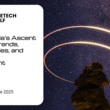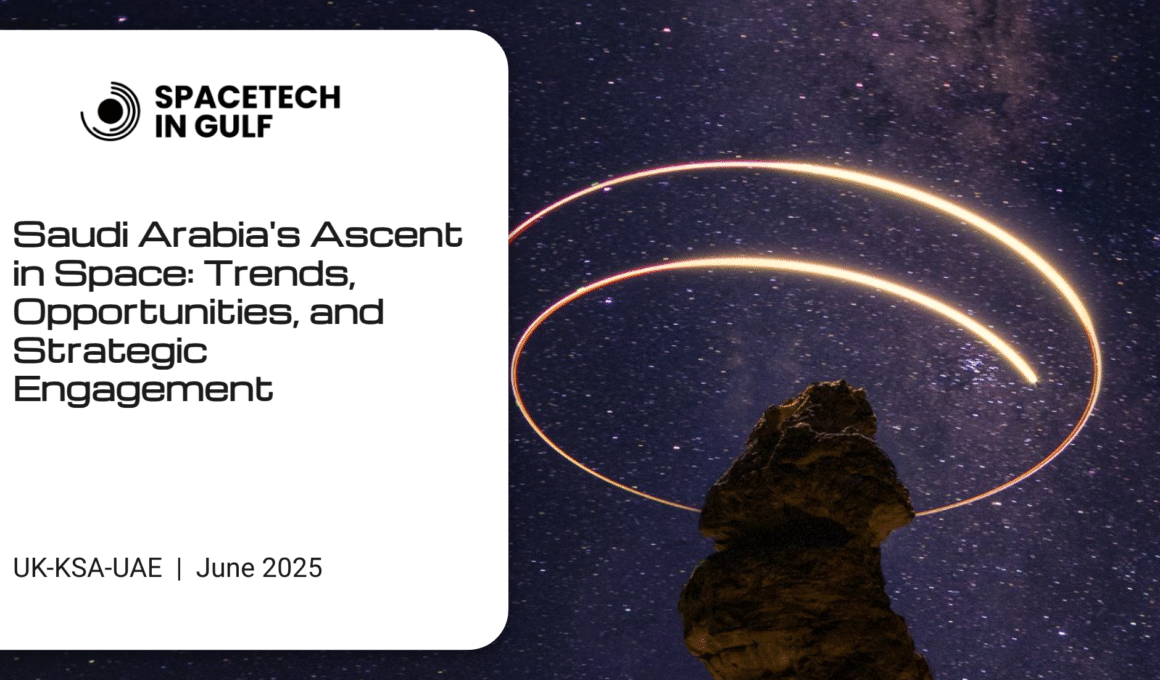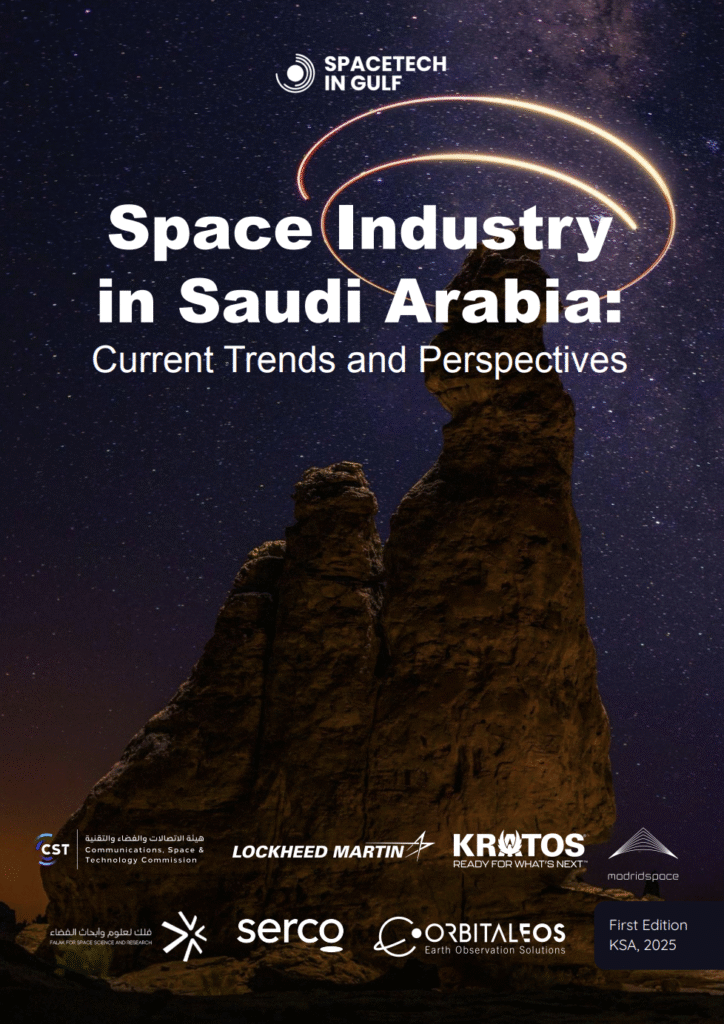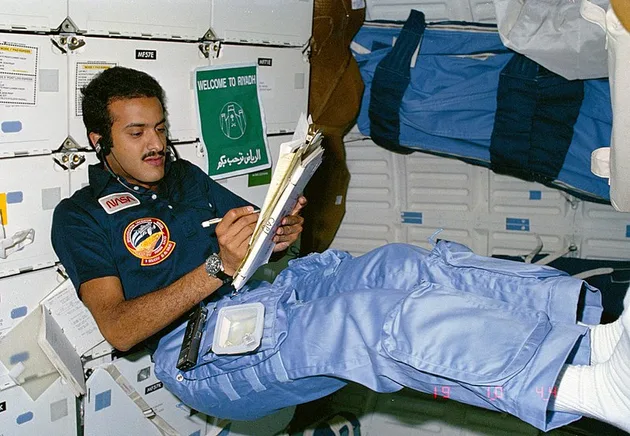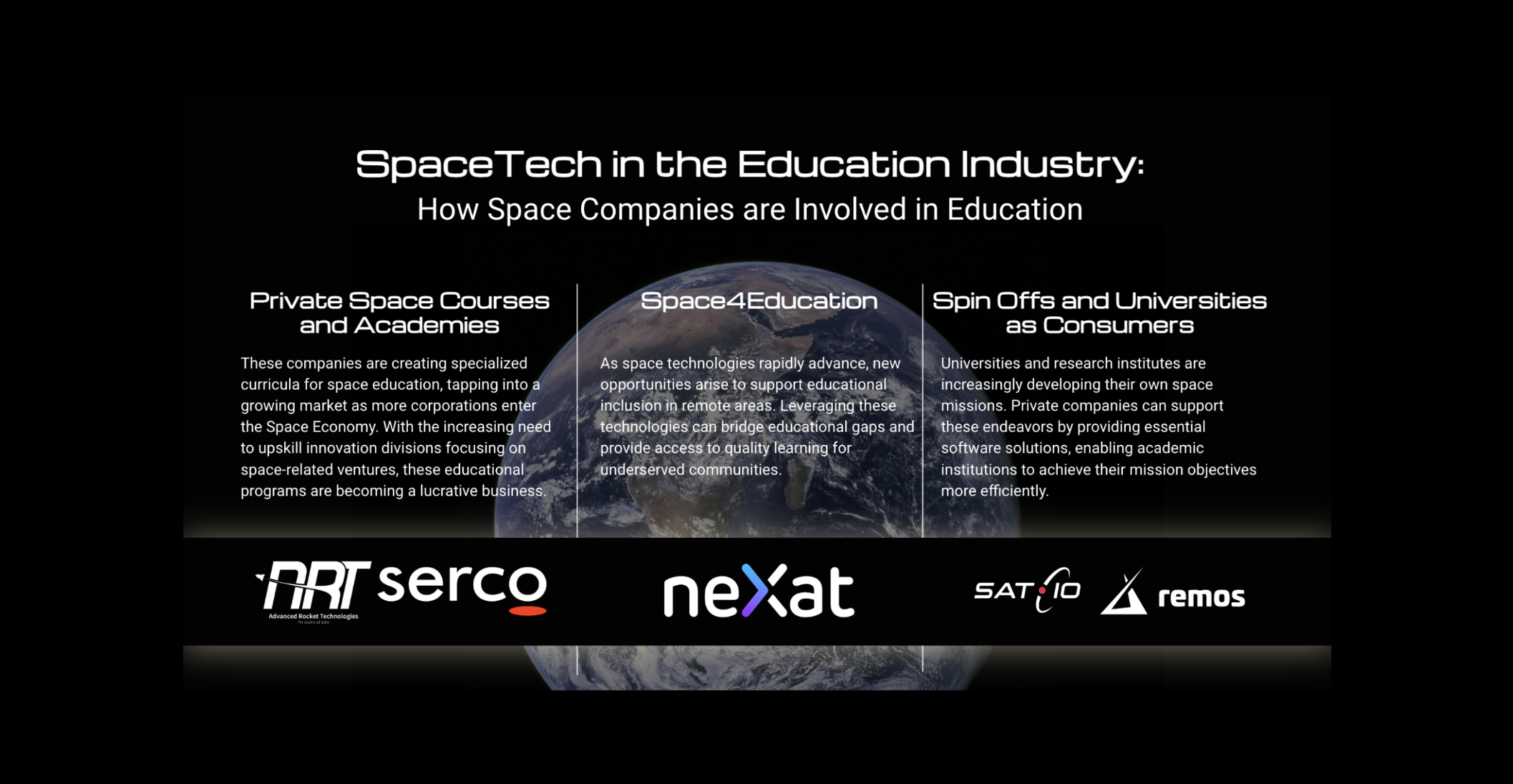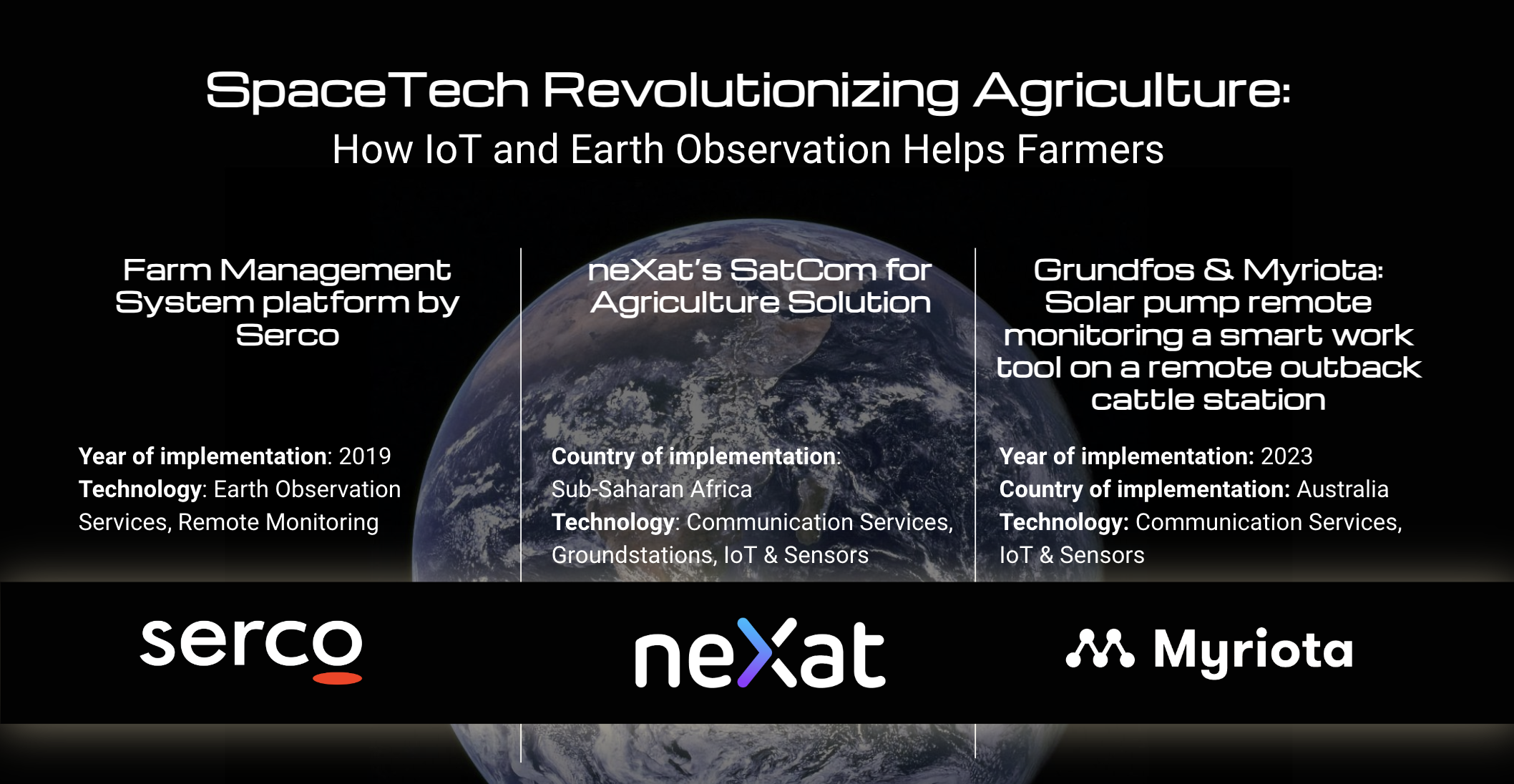Table of Contents
- I. Saudi Arabia’s Strategic Vision for Space
- II. The Evolving Saudi Space Economy
- III. Pillars of Saudi Space Development
- Human Space Flight Program: Objectives, Research Areas, and Future Missions (Moon, Mars)
- Satellite Technology Development and Localization: Initiatives to Build Domestic Capabilities, Including Neo Space Group’s Role
- Downstream Services and Data Utilization: Growth in Geospatial Services, IoT Connectivity, and Advanced Analytics
- IV. Enabling Environment: Policy, Investment, and Talent
- Legal and Regulatory Framework: Alignment with International Standards, Updated Investment Law (Feb 2025) Provisions
- Investment Incentives and Funding Mechanisms: Standard Incentives Program, Tax Benefits, Full Foreign Ownership, Special Economic Zones (SEZs)
- Workforce Development and Addressing Skill Gaps: Saudization Policies, Training Programs, and Talent Mobility Initiatives
- V. International Collaboration and Global Positioning
- VI. Challenges and Strategic Considerations for Industry
- VII. Conclusion and Recommendations for Industry Engagement
- About the Authors
Saudi Arabia is undergoing a profound economic and social transformation, primarily driven by its ambitious Vision 2030. This comprehensive national blueprint, initiated in 2016, seeks to diversify the Kingdom’s economy beyond its traditional reliance on oil, fostering a vibrant society and a thriving, knowledge-based economy. Within this transformative agenda, space exploration has emerged as a pivotal sector, positioned as a key driver for investment in science, technology, and innovation. The Kingdom’s overarching aspiration is to establish itself as a global leader in the space sector, thereby contributing significantly to both local scientific advancement and broader economic growth.
The Kingdom’s space ambitions are clearly reflected in its rapid market expansion. The Saudi space economy was valued at $8.7 billion in 2024, with the direct space market, encompassing commercial services and infrastructure, reaching $1.9 billion in the same year. Projections indicate a substantial growth trajectory, with the space economy anticipated to soar to $31.6 billion by 2035, demonstrating an impressive Compound Annual Growth Rate (CAGR) of 12%. The direct space market is also expected to expand significantly, reaching $5.6 billion by 2035, underpinned by continuous investments in advanced space technologies and infrastructure. This accelerated growth rate for Saudi Arabia’s space economy, notably higher than the global average CAGR of 9% projected for the overall space economy, underscores the Kingdom’s aggressive investment strategy and its commitment to rapid development in this domain.
For industry players, these trends present a wealth of opportunities across various segments. These include burgeoning prospects in satellite communications, Earth observation, human spaceflight, and nascent areas such as space tourism and in-space manufacturing. The Saudi government actively cultivates a conducive environment for foreign investment, offering a suite of incentives and a streamlined regulatory framework designed to attract global businesses and expertise.
The Kingdom’s pursuit of space capabilities extends beyond mere economic diversification. The consistent emphasis on becoming a “global leader,” a “global hub,” and “enhancing global standing,” explicitly articulated as orchestrating “the rise of Saudi Arabia as a global space power,” indicates a deeper strategic intent. This perspective suggests that the space program is not solely an economic tool but also a deliberate instrument for geopolitical influence and national prestige. Consequently, for industry participants, engaging with Saudi entities in the space sector transcends a purely commercial transaction; it inherently carries significant diplomatic and strategic weight for the Kingdom. Projects that demonstrably align with Saudi Arabia’s global ambitions and contribute to its international standing are likely to garner preferential support and accelerated pathways to success.
I. Saudi Arabia’s Strategic Vision for Space
Vision 2030 as the Catalyst: Economic Diversification and Global Standing
Saudi Arabia’s strategic pivot towards space is intrinsically linked to Vision 2030, the Kingdom’s overarching blueprint for economic and social transformation. Launched in 2016, this ambitious plan is designed to reduce the nation’s economic dependence on oil revenues and cultivate a vibrant, diversified economy. Space exploration is recognized as a pivotal sector within this framework, serving as a powerful catalyst for investment in science, technology, and innovation across the Kingdom.
The strategic pillars of Vision 2030 – a Vibrant Society, a Thriving Economy, and an Ambitious Nation – are directly reinforced and propelled by space-related initiatives. The “Thriving Economy” pillar, for instance, specifically aims to drive economic growth and diversification through targeted initiatives in the space sector. This includes fostering public-private participation, directing strategic investments into key areas of the space industry, and developing robust downstream services that leverage space-derived data and technologies. Concurrently, the “Ambitious Nation” pillar seeks to elevate Saudi Arabia to a position of global space power. This is pursued through dedicated investments in research and development (R&D), the advancement of cutting-edge space technologies, and the cultivation of operational sovereignty within the space domain. Ultimately, these integrated efforts are designed to enhance the nation’s global standing in scientific and technological fields, generate high-skilled employment opportunities for Saudi citizens, and attract crucial foreign investment and expertise in advanced technologies.
Key Institutions and Governance: Roles of SSA, CST, Supreme Space Council, and PIF
The strategic direction and rapid development of Saudi Arabia’s space sector are orchestrated by a robust institutional framework. This framework ensures a coordinated national effort, aligning all space-related activities with the broader objectives of Vision 2030.
At the forefront of these efforts is the Saudi Space Agency (SSA), established in 2018. The SSA serves as the primary governmental entity responsible for developing and strengthening the Kingdom’s space sector. Its vision is to be “the engine of socio-economic growth for Saudi Arabia and the World through innovation and space exploration”. The agency’s mission encompasses capability development, facilitating collaborations, promoting innovation, and enabling the commercialization of space science and exploration. Key operational roles of the SSA include the development of satellite systems, monitoring and tracking space objects and debris, executing human exploration missions, preparing and supporting studies and research related to space technologies, developing the capabilities of national cadres, and fostering international cooperation.
The Communications, Space, and Technology Commission (CST) plays a crucial regulatory and supervisory role. Formerly known as the Communications and Information Technology Commission, its renaming in 2022 underscored the Kingdom’s escalating focus on space within its technological landscape. The CST is tasked with ensuring transparent and equitable competition within the space sector, empowering the burgeoning space ecosystem to achieve strategic goals, and strengthening collaboration with government entities and other sectors to drive progress. The CST is also instrumental in guiding market development, evidenced by its publication of key reports such as the “KSA Space Market Report 2025”.
Strategic oversight is provided by the Supreme Space Council. Established in November 2022 and chaired by His Royal Highness the Crown Prince, this high-level body is responsible for formulating comprehensive policies and strategies for all national space programs. It approves annual plans and meticulously oversees the implementation of the national space strategy, ensuring its seamless alignment with various national needs and sectors.
A critical financial and strategic enabler is the Public Investment Fund (PIF). As Saudi Arabia’s sovereign wealth fund, PIF acts as the Kingdom’s primary investment arm, driving strategic and sustainable diversification in line with Vision 2030 objectives. In a significant move in 2024, PIF launched the Neo Space Group, marking the Kingdom’s first major venture into the satellite and space industries. This initiative signifies a profound commitment to developing domestic capabilities and localizing space technologies within Saudi Arabia. PIF’s substantial funding capacity is drawn from diverse sources, including capital injections from the government, transferred government assets, loans and debt instruments, and retained earnings from its extensive investment portfolio.
The establishment of the Supreme Space Council under the Crown Prince, the strategic renaming of CITC to CST, and the clearly defined mandate of the SSA collectively demonstrate a highly centralized and coordinated national strategy for space. This is not a fragmented set of initiatives but rather a top-down, integrated approach meticulously designed to align all space-related activities with the ambitious goals of Vision 2030. The central role of the PIF as the primary investment vehicle further solidifies this centralized control and funding mechanism. For industry stakeholders, this structured environment implies a clear chain of command and streamlined decision-making processes, which can facilitate engagement for large-scale, strategically aligned projects. However, it also means that any proposed projects must clearly articulate and demonstrate their alignment with national objectives and the core pillars of Vision 2030 to gain traction and secure essential government support and funding.
Historical Context and Recent Milestones
Saudi Arabia’s engagement with space is not a recent phenomenon, with its history in space exploration dating back 40 years. A significant early milestone was Prince Sultan bin Salman Al Saud’s space trip, which made him the first Saudi Arabian citizen, Arab, Muslim, and member of a royal family to venture into the final frontier. This pioneering journey underscored the Kingdom’s early interest in space.

In the decades leading up to 2025, Saudi Arabia actively engaged with international space governance by signing and ratifying several key international treaties that regulate space activities. These include the 1967 Outer Space Treaty (ratified in 1976), the 1972 Liability Convention (ratified in 1976), the 1975 Registration Convention (ratified in 2012), and the 1968 Rescue Agreement (ratified in 2021). It is noteworthy that Saudi Arabia withdrew from the 1984 Moon Agreement in January 2023, indicating a selective approach to international frameworks that best serve its evolving national interests. Further demonstrating its early domestic capabilities, the KSU-CubeSat, the Kingdom’s first 1U satellite, was developed by engineering students at King Saud University for training and research purposes, highlighting foundational efforts in local talent and technology building.
A landmark achievement in the Kingdom’s space journey occurred on May 21, 2023, with the inaugural mission of the Saudi Space Agency’s Human Space Flight Program (SSA-HSF1). This historic mission saw two Saudi astronauts, Rayyanah Barnawi (the first Saudi woman to venture into space) and Ali Alqarni, launched to the International Space Station (ISS) for a 10-day short-stay mission. During this mission, eleven scientific microgravity research experiments were conducted, focusing on critical areas such as human health, cell science, and weather and climate science. Complementing these scientific endeavors, three scientific outreach experiments were also performed, engaging 12,000 students across 47 different locations in Saudi Arabia.
Beyond scientific missions, Saudi Arabia has also made significant strides in commercial space ventures. In 2024, the Public Investment Fund (PIF) launched the Neo Space Group, a strategic move to bolster the domestic satellite and space industries. The same year, the Kingdom forged a significant partnership with Madrid-based HALO Space to host pioneering test flights for near-space tourism, with manned flights scheduled for 2025 and anticipated commercial operations commencing in 2026. These missions are designed to ascend 35 kilometers above Earth, offering passengers unparalleled views of the planet and the cosmos.
The Kingdom’s human spaceflight program, beyond its immediate scientific objectives, explicitly aims to “prepare Saudi cadres to become professional astronauts” and to “grow Saudi’s technical human capital”. The deliberate inclusion of “three scientific outreach experiments” engaging thousands of students, alongside initiatives like the “Sari Competition” that encourages students to design and build small satellites, highlights a purposeful strategy. This approach is designed to inspire and cultivate a future generation of scientists, engineers, and innovators from a young age, ensuring a sustainable talent pipeline for the burgeoning space sector. For companies considering entry into the Saudi space market, this emphasis suggests that proposals incorporating educational and workforce development components will likely receive stronger government support and align more closely with national priorities. This also points to a long-term commitment to building indigenous capabilities rather than merely relying on external expertise.
II. The Evolving Saudi Space Economy
Market Size and Growth Projections: Current Valuation and Future Forecasts
The Saudi Arabian space economy is experiencing a period of robust expansion, reflecting the Kingdom’s strategic investments and ambitious Vision 2030 objectives. As of 2024, the total Saudi Space economy, which encompasses all value-added activities and industries derived from space technologies and services, reached an impressive $8.7 billion. Within this broader economy, the direct Saudi Space market, specifically focused on commercial services and infrastructure, was valued at $1.9 billion in the same year.
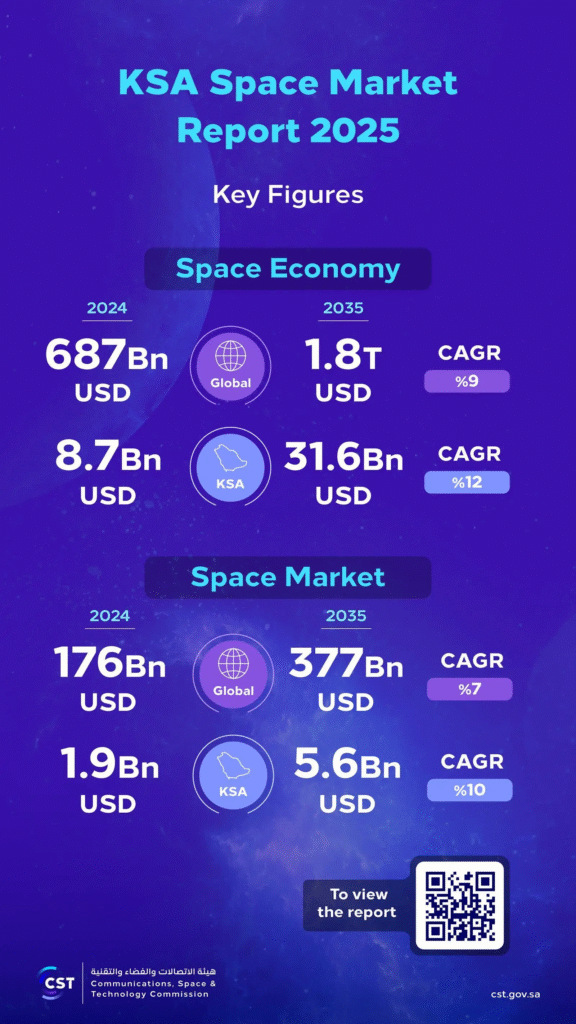
Looking ahead, projections for the Saudi space economy are even more significant. It is anticipated to grow to $31.6 billion by 2035, demonstrating a remarkable Compound Annual Growth Rate (CAGR) estimated at 12% from 2025 to 2035. The direct Saudi Space market is also expected to expand substantially, reaching $5.6 billion by 2035, driven by continuous advancements and investments in space technologies.
These domestic growth figures are set against a backdrop of a rapidly expanding global space sector. The global space economy is projected to reach $1.8 trillion by 2035, recording a CAGR of 9%. Similarly, the global space market, which stood at $176 billion in 2024, is expected to grow to $377 billion by 2035. A critical observation from these figures is that Saudi Arabia’s projected CAGR for its space economy (12%) is notably higher than the global average (9%). This accelerated growth trajectory underscores the Kingdom’s aggressive investment and development strategy, signaling a strong commitment to becoming a major player in the global space industry.
The following table provides a clear quantitative overview of these projections:
Table 1: Saudi Space Economy and Market Projections (2024-2035)
| Metric | 2024 (USD Billion) | 2035 (Projected, USD Billion) | CAGR (2025-2035) |
| Saudi Space Economy | 8.7 | 31.6 | 12% |
| Saudi Space Market | 1.9 | 5.6 | 10% |
| Global Space Economy | 687.0 | 1800.0 (1.8 Trillion) | 9% |
| Global Space Market | 176.0 | 377.0 | 7% |
This comparative analysis reveals the significant potential for substantial returns for early investors and underscores the Kingdom’s unwavering dedication to its space ambitions. The higher projected growth rate for Saudi Arabia’s space economy, relative to global trends, quantifies the “rapid advancement” and “transformative leap” that the Kingdom is undertaking in this sector.
The Saudi space industry is predominantly fueled by the commercial sector, with approximately 250+ companies actively operating in the country, underscoring significant private sector engagement. In addition, 20+ government agencies contribute to regulation and sector facilitation. The education and research also highlights the involvement of 10+ educational and R&D institutions and 15 investment bodies, reflecting a growing ecosystem focused on research, development, and funding. The distribution of the 110 Saudi space companies across Saudi Arabia highlights Riyadh as the central hub, with 76 companies based in the capital. This dominance underscores Riyadh’s role as the country’s primary center for space industry activities, likely due to its proximity to government agencies, research institutions, and funding sources. Jeddah follows with 7 companies, suggesting a secondary cluster for space-related enterprises, while smaller numbers are distributed across cities like Khobar (4 companies) and Jubail (2 companies), indicating emerging interest. NEOM, Thuwal, and Dammam each host 1 company, reflecting potential for future growth as these areas continue to develop their technological and industrial capabilities.
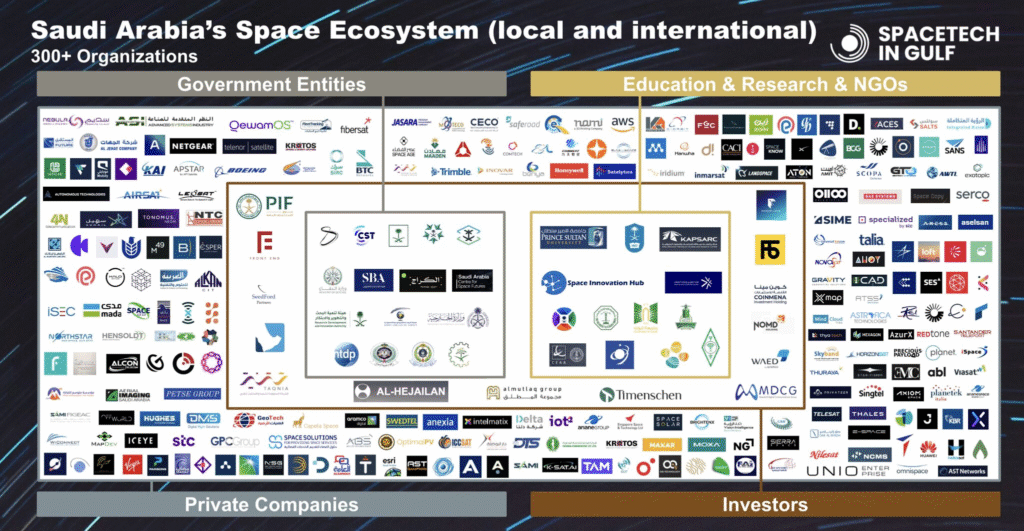
Key Market Segments and Opportunities
Saudi Arabia’s evolving space economy presents diverse opportunities across several key market segments, driven by both national strategic needs and commercial aspirations.
Satellite Communications and Navigation
This segment represents a core focus for the Kingdom, with significant initiatives underway to manufacture communication satellites and provide a wide array of related services. The newly established Neo Space Group (NSG) is poised to be an integrated multi-orbit and frequency value-added service provider, leveraging both its own capabilities and strategic partnerships. A strong emphasis is placed on utilizing satellite technology to bridge the digital divide by bringing high-speed internet to underserved and remote areas, thereby facilitating the growth of digital services and smart cities. Furthermore, satellite communications are critical for enhancing national defense capabilities and security. The Kingdom is also actively advocating for greater international coordination on technical standards and radio spectrum management, aiming to stimulate investment and ensure seamless integration across the global satellite communications sector.
Earth Observation and Remote Sensing Applications
Saudi Arabia has made considerable investments in Earth observation capabilities, launching high-resolution imaging satellites such as ShaheenSat, SaudiSat (3, 5A, and 5B). These assets are crucial for a variety of applications, including detailed mapping, supporting agricultural development, informing urban planning, facilitating disaster response, and conducting comprehensive environmental monitoring. The Saudi Geological Survey (SGS) extensively utilizes remote sensing for geological interpretations, identifying different rock types and structures through the processing and analysis of satellite imagery. SGS also maintains integrated digital databases of satellite imageries and spectral impressions of rocks and minerals across the Kingdom, providing essential data for earth science applications and mapping natural and unnatural phenomena. A practical application of this technology is the deployment of new satellite monitoring systems for environmental oversight at Hajj sites, which analyze air, water, and soil quality, enabling the rapid dispatch of emergency teams to affected areas. Historically, Saudi Arabia has also collaborated on remote sensing validation, as evidenced by the NASA remote sensing validation data collected for solar radiation monitoring from 1998 to 2003.
Rocket Manufacturing and Launch Services
While current detailed projects in this area are less extensively highlighted, the “KSA Space Market Report 2025” explicitly identifies “Rocket manufacturing and launching” as a notable market area for investment and development within the Saudi space sector. This inclusion indicates a long-term aspiration to develop indigenous capabilities in the upstream segment of the space value chain.
In-Space Manufacturing and Technology Development

The Human Space Flight (HSF) program’s research focus areas explicitly include “in-space manufacturing” and “technology development”. This signals a forward-looking vision for developing advanced capabilities that extend beyond Earth-based operations, potentially leading to new industries and applications in the future.
Space Tourism and Commercial Ventures
Saudi Arabia is actively positioning itself at the forefront of the emerging space tourism market. A partnership has been forged with Madrid-based HALO Space to host pioneering test flights for near-space tourism. Unmanned test flights commenced in 2024 from Al-Aflaj Oasis, with manned flights scheduled for 2025 and commercial operations anticipated to begin by 2026. These unique missions are designed to ascend 35 kilometers above Earth, offering passengers an unparalleled view of the planet and the cosmos during a six-hour journey. Further demonstrating its commitment to this sector, the Public Investment Fund (PIF) has also invested in Virgin Galactic, indicating a broader interest in space travel ventures.
An analysis of the current focus and projected growth areas suggests that while Saudi Arabia harbors long-term ambitions for full operational sovereignty, including upstream capabilities like rocket manufacturing and launch services, the immediate and most accessible opportunities for industry players reside in providing and leveraging satellite-based services, particularly in the downstream segment. The “KSA Space Market Report 2025” emphasizes “Earth observation data analysis, infrastructure services, integrated communication systems, advanced sensing systems, and the development of small satellites” as key areas of development. The Neo Space Group’s core business areas, including Satellite Communications, Geospatial services, and Positioning, Navigation, and Timing (PNT), further reinforce this emphasis on applications and services. Therefore, companies specializing in data analytics, communication solutions, and geospatial applications will likely encounter a more mature and rapidly expanding market in the near term. Conversely, those involved in manufacturing and launch services should consider strategic, long-term partnerships that align with the Kingdom’s overarching localization drive.
The Saudi space program is fundamentally about leveraging space-derived data and technologies to address critical terrestrial challenges and support national development goals. Remote sensing applications are explicitly linked to practical, real-world issues such as urban planning, agricultural development, disaster response, and environmental monitoring. The use of satellite data for environmental monitoring during the Hajj pilgrimage and for validating solar resource data demonstrates the tangible impact of these applications. The Saudi Geological Survey’s utilization of remote sensing for “earth science applications” and “mapping natural and unnatural phenomena” further solidifies this approach. This indicates that industry players offering solutions that translate satellite data into actionable insights for sectors like smart cities, environmental sustainability, resource management, and public safety will find significant demand and strong alignment with Vision 2030’s broader objectives, highlighting the interdisciplinary nature of Saudi Arabia’s space strategy.
III. Pillars of Saudi Space Development
Human Space Flight Program: Objectives, Research Areas, and Future Missions (Moon, Mars)
The Saudi Space Agency (SSA) has initiated the Kingdom’s first sustainable Human Space Flight (HSF) program, marking a significant commitment to human presence in space. The primary objective of this program is to prepare Saudi individuals to become professional astronauts, who will undertake both short and long-duration missions to conduct research for the benefit of all humanity. Beyond scientific discovery, the HSF program is designed to foster international collaboration, thereby enhancing Saudi Arabia’s global role and contributions, and to enable the realization of Vision 2030 through the growth of Saudi technical human capital and economic diversification.
The inaugural mission of this program, SSA-HSF1, was successfully launched on May 21, 2023. This historic flight sent two Saudi astronauts, Rayyanah Barnawi (the first Saudi woman in space) and Ali Alqarni, to the International Space Station (ISS) for a 10-day mission. During their time on the ISS, the astronauts conducted eleven scientific microgravity research experiments. These experiments primarily focused on critical areas such as human health (e.g., investigating changes in blood-based biomarkers to assess brain safety, measuring telomere length alterations, utilizing pupillometry and EEG to study intracranial pressure and brain electrical activity, and determining optic nerve sheath diameter and cerebral perfusion in microgravity), cell science (including four experiments on messenger ribonucleic acid (mRNA) response, lifespan in space, effects on inflammation, and immune cell models for drug therapy in microgravity), and weather and climate science (specifically comparing cloud seeding techniques on Earth and in microgravity). In addition to these scientific pursuits, three scientific outreach experiments were also performed, engaging 12,000 students across 47 different locations in Saudi Arabia, aiming to foster critical thinking about scientific experimentation.
Looking to the future, the research focus areas of the HSF program are explicitly designed to “enable future missions to the Moon and Mars”. This long-term vision is further solidified by Saudi Arabia’s accession to the Artemis Accords, an international coalition dedicated to the peaceful exploration of the Moon, Mars, asteroids, and comets. This alignment with NASA’s broader Artemis program, which aims to establish a sustainable human presence on the Moon as a stepping stone for the first human missions to Mars, clearly positions Saudi Arabia as a committed partner in ambitious deep-space exploration endeavors.
Satellite Technology Development and Localization: Initiatives to Build Domestic Capabilities, Including Neo Space Group’s Role
Saudi Arabia is making substantial investments in its space infrastructure and satellite development capabilities, with the explicit goal of emerging as a key player in the global satellite industry. This strategic push is underpinned by a strong emphasis on localization and the development of indigenous technological expertise.
A cornerstone of this localization strategy is the Neo Space Group (NSG), launched by the Public Investment Fund (PIF) in 2024. NSG represents the Kingdom’s first major venture into the satellite and space industries, signaling a profound commitment to developing domestic capabilities in space technology. The group’s ambitious goals include the manufacturing of communication satellites, the provision of diverse space services, and a significant contribution to the localization of space technologies within Saudi Arabia. NSG’s operational scope encompasses key business areas such as Satellite Communications, Geospatial services, and the soon-to-be-launched Positioning, Navigation, and Timing (PNT) solutions. Furthermore, NSG is establishing a Global Space Venture Capital Fund, specifically designed to invest in multiple startups with the objective of transferring knowledge and localizing space-related activities within the Kingdom.

The Kingdom’s past efforts in satellite technology development include a series of successful launches. These comprise various SaudiSat models (1A, 1B, 1C, 2, 3, 4, 5A, 5B), SaudiComsat (1-7), SGS-1 (manufactured and tested by Lockheed Martin in collaboration with KACST), ShaheenSat, and CubeSat. These satellites have served diverse purposes, ranging from communications and Earth observation to scientific research and technology demonstration.

The trajectory of Saudi Arabia’s space activities indicates a deliberate evolution from being primarily a consumer of space technology to becoming a producer. While past endeavors involved launching satellites and sending an astronaut into space, the current strategic focus is explicitly on establishing “sustainable” programs, “developing domestic capabilities,” “localizing space technologies,” and exploring “in-space manufacturing”. The creation of the Neo Space Group with the explicit aim to “manufacture communication satellites” and the establishment of a Global Space Venture Capital Fund to “transfer knowledge and localize activities” are concrete manifestations of this shift. This transformation signifies a long-term strategic intent for self-sufficiency and leadership in the space sector. For industry players seeking engagement, this implies that proposals incorporating technology transfer, fostering joint ventures, and establishing local manufacturing capabilities will be key differentiators and are more likely to align with the Kingdom’s strategic priorities.
Downstream Services and Data Utilization: Growth in Geospatial Services, IoT Connectivity, and Advanced Analytics
The “Thriving Economy” pillar of Vision 2030 explicitly targets the development and expansion of “Downstream Services” within the space sector. This strategic emphasis underscores the Kingdom’s recognition of the immense value derived from space-based data and applications for terrestrial benefit.
Neo Space Group’s (NSG) Geospatial Services, formerly known as Taqnia ETS, exemplifies this focus. NSG offers a comprehensive suite of services covering the entire downstream geospatial value chain. This ranges from data acquisition and processing to advanced analytics and the provision of near-real-time geospatial intelligence. The group leverages its homegrown infrastructure and sophisticated AI-powered systems to process and analyze vast areas of the region with high capacity and efficiency, producing high-resolution dynamic 2D and 3D datasets, digital maps, and curated industry-relevant spatial data products.
Satellite technology is also considered crucial for bridging the digital divide across Saudi Arabia, facilitating the expansion of broadband internet to underserved and remote areas. This connectivity is vital for enabling the growth of digital services and the development of smart cities, aligning with the broader digitalization goals of Vision 2030. Furthermore, advancing Internet of Things (IoT) connectivity is a key program and initiative for NSG, indicating a strategic focus on developing and deploying space-enabled IoT solutions to support various industries and applications. The “KSA Space Market Report 2025” reinforces these priorities by highlighting “Earth observation data analysis,” “infrastructure services,” and “integrated communication systems” as notable areas of development within the Saudi space sector.
IV. Enabling Environment: Policy, Investment, and Talent
Legal and Regulatory Framework: Alignment with International Standards, Updated Investment Law (Feb 2025) Provisions
Saudi Arabia’s approach to space governance is built upon a robust legal and regulatory framework that largely aligns with international requirements and standards established by organizations such as the United Nations (UN) and the International Telecommunication Union (ITU). The Kingdom has demonstrated its commitment to international space law by signing and ratifying 4 main international treaties regulating space activities. These include the 1967 Outer Space Treaty (ratified in 1976), the 1968 Rescue Agreement (ratified in 2021), the 1972 Liability Convention (ratified in 1976), and the 1975 Registration Convention (ratified in 2012). Saudi Arabia also signed the Artemis Accords in 2022, an initiative launched by NASA and regarded as a non-binding agreement aimed at guiding responsible space exploration. It is worth noting the Kingdom’s strategic decision to withdraw from the 1984 Moon Agreement in January 2023, indicating a selective engagement with international frameworks that best serve its national interests and ambitious lunar and Mars exploration goals.
A significant development in the broader investment landscape, which directly impacts the space sector, is the updated Investment Law, which came into force on February 12, 2025. This new law introduces a unified investment framework applicable equally to both foreign and domestic investors, eliminating previous distinctions and aiming to enhance competitiveness and protect investor rights. A key reform is the replacement of earlier complex investment licensing requirements for foreign investors with a more streamlined registration process, significantly reducing procedural barriers to market entry.
The law includes specific and enhanced protections for investors, such as a guarantee of fair and equitable treatment, robust safeguards against expropriation (which can only occur through a final judicial ruling and with fair compensation), and the affirmation of the right to transfer profits, returns, and liquidation proceeds abroad. While the executive regulations grant the Ministry of Investment the authority to intervene when national security is at stake, coordinating with relevant government bodies to take preemptive or corrective actions , the law also allows for the use of alternative dispute resolution mechanisms, including arbitration and mediation, to foster a more flexible and efficient investment environment in case of disputes between an investor and the government. Overall, the law aims to promote fair competition and ensure equal treatment for both domestic and international investors.
In 2024, the Communications, Space, and Technology Commission (CST) further strengthened the regulatory framework for the space sector by issuing two key documents related to Earth Observation (EO) platforms. These are the Earth Observation (EO) Platform Regulations and the Application for Obtaining a Permit to Provide Earth Observation (EO) Platform Service document, both issued on April 15, 2024. These regulations aim to create an environment that enables the private sector to establish and develop EO services and emerging businesses. Specifically, they facilitate the granting of permits for entities responsible for establishing and operating electronic platforms for collecting and processing EO data, acting as a market and digital enabler. This also aims to establish links between EO data providers and value-added service providers to develop and process data into valuable programs and products. The “Application for Obtaining a Permit to Provide Earth Observation (EO) Platform Service” document outlines the requirements for applicants and relevant obligations to ensure user rights and data trading safety. The CST initiated its first regulatory activities in the space sector by launching this EO platform service permit in 2024. Neo Space Group was subsequently selected as the qualified applicant to provide EO platform services after the application deadline of July 7, 2024.
Investment Incentives and Funding Mechanisms: Standard Incentives Program, Tax Benefits, Full Foreign Ownership, Special Economic Zones (SEZs)
Saudi Arabia is actively positioning itself as a premier destination for international investment, with the government providing comprehensive support for foreign capital entry. This proactive stance is manifested through a suite of compelling incentives and strategic funding mechanisms.
A notable initiative is the Standard Incentives for the Industrial Sector Program, launched in early 2025 by the Ministry of Industry and Mineral Resources in collaboration with the Ministry of Investment. This program offers significant financial support, providing up to 35% of eligible initial investment, capped at SAR 50 million, for innovative projects that expand the Kingdom’s industrial capacities. It particularly targets products not currently produced locally, encouraging diversification and self-sufficiency, and offers sustained financial and operational performance enablement for up to seven years during both construction and operational phases.
The Kingdom also provides enhanced tax incentives. These include a reduced corporate tax rate of 5% within Special Economic Zones (SEZs), significantly lower than the national standard of 20%. Furthermore, foreign investors benefit from zero withholding tax on repatriated profits from SEZs, enhancing financial efficiency. Certain strategic sectors may also qualify for extended 30-year tax exemption packages.
A pivotal reform is the allowance of full foreign ownership across various sectors, eliminating the previous requirement for local partnerships and simplifying market entry and control for international companies.
Strategic Economic Zones (SEZs) are a cornerstone of Saudi Arabia’s investment attraction strategy. The Kingdom has established five world-class SEZs – King Abdullah Economic City (KAEC), Jazan Economic City, Cloud Computing at KACST, Special Integrated Logistics Zone (SILZ) in Riyadh, and Ras Al Khair. These zones offer unparalleled benefits, including significant tax breaks, customs duty exemptions on capital equipment and production inputs, and relaxed labor regulations.
Specifically relevant to the space industry:
- King Abdullah Economic City (KAEC), the largest SEZ at 60 km², is located along the Red Sea, providing direct access to African and European markets. It is designed as a hub for industrial and technological innovation, with focus sectors including Aerospace, Information & Communication Technology (ICT), electronic light manufacturing, and health and life sciences.
- The Cloud Computing at KACST SEZ in Riyadh is a leading cloud computing and innovation center. It provides a flexible regulatory environment for testing and launching emerging technologies, with focus sectors highly relevant to space data processing and analytics, such as Information Technology, cloud consulting and infrastructure, data center development, cybersecurity solutions, Artificial Intelligence (AI), and Research & Development.
- The Special Integrated Logistics Zone (SILZ), adjacent to King Khalid International Airport in Riyadh, offers direct access to global air cargo routes and modern warehousing. Its focus sectors, including aerospace and spare parts, and global logistics and distribution, could significantly support the movement and storage of space hardware and components.
- The Ras Al Khair SEZ focuses on shipbuilding, maintenance, repair, and operation sectors, including floating drilling platforms. While not directly space-focused, its heavy industry capabilities could be indirectly relevant for large-scale space infrastructure or potential future launch platforms.
Table 2: Key Investment Incentives in Saudi Arabia’s Space Sector
| Incentive Category | Specific Provision | Relevance to Space Sector |
| Financial & Tax | Standard Incentives Program: Up to 35% of initial investment (cap SAR 50M), 7 years enablement. | Reduces capital outlay for new ventures, particularly for localized manufacturing. |
| SEZ Corporate Tax: Reduced to 5% (vs. 20% national). | Significantly improves profitability for companies operating within designated zones. | |
| SEZ Withholding Tax: 0% on profit repatriation. | Enhances financial efficiency for foreign investors. | |
| SEZ Customs Duty Exemption: For capital equipment & production inputs. | Lowers operational costs for manufacturing and R&D facilities. | |
| 30-Year Tax Exemption Packages: For certain sectors. | Provides long-term financial stability for strategic investments. | |
| SIDF Financing: Favorable options for industrial/infrastructure projects. | Access to capital for large-scale space infrastructure or manufacturing. | |
| Ownership & Regulatory | 100% Foreign Ownership: Across various sectors. | Simplifies market entry and control for international companies. |
| Updated Investment Law (Feb 2025): Unified framework, streamlined registration. | Reduces bureaucratic barriers, increases transparency and ease of doing business. | |
| Alternative Dispute Resolution: Arbitration & mediation. | Offers flexible and efficient mechanisms for resolving commercial disputes. | |
| Strategic & Infrastructure | Special Economic Zones (SEZs): World-class infrastructure, business-friendly regulations. | Provides tailored ecosystems for specific industries, including aerospace and technology. |
| PIF Access: Exclusive access to opportunities & government contracts for regional HQs. | Direct access to significant government-backed projects and funding. | |
| NEOM Megacity: $500B smart city project. | Potential for integration of advanced space technologies (e.g., smart city applications, connectivity). |
This table provides a clear, actionable overview for potential investors, demonstrating the breadth and depth of Saudi Arabia’s commitment to attracting foreign direct investment in strategic sectors like space. It highlights that the incentives are not merely financial but also structural, encompassing regulatory reform and specialized economic zones, and strategic, offering direct access to significant government-backed projects and funding through entities like PIF. This creates a holistic pro-business environment.
Table 3: Relevant Special Economic Zones and Focus Sectors for Space Industry
| SEZ Name | Location/Key Highlights | Focus Sectors (Relevant to Space) |
| King Abdullah Economic City (KAEC) | West Region (Makkah), 60 km², Red Sea access, integrated with King Abdullah Port, KAUST University. Hub for industrial and technological innovation. | Aerospace, Information & Communication Technology (ICT), Electronic light manufacturing, Health and life sciences. |
| Cloud Computing at KACST | Central Region (Riyadh), Innovation Tower at KACST. Leading cloud computing & innovation center in ME. Flexible regulatory environment for testing emerging technologies. | Information technology, Cloud consulting and infrastructure, Data center development, Cybersecurity solutions, Artificial intelligence (AI), Research & development. |
| Special Integrated Logistics Zone (SILZ) | Central Region (Riyadh), Adjacent to King Khalid International Airport, 3.0 km². Direct access to global air cargo routes, modern warehousing. | Aerospace and spare parts, Global logistics and distribution, Consumer goods, Pharmaceuticals. |
| Ras Al Khair | Eastern Region, 20 km². | Shipbuilding, maintenance, repair, and operation sectors, floating drilling platforms. (Indirectly relevant for large-scale space infrastructure/launch platforms) |
This table is crucial for industry players to identify the most suitable locations for their operations based on their specific niche within the space sector. It illustrates that Saudi Arabia’s SEZ strategy is highly targeted, providing specialized environments and incentives for different aspects of the space value chain, from manufacturing to data processing and logistics. This targeted approach is designed to minimize general risks and maximize sector-specific advantages for investors.
Beyond these incentives, Saudi Arabia offers various financial support mechanisms. The Saudi Industrial Development Fund (SIDF) provides favorable financing options for industrial and infrastructure projects, bolstering economic diversification efforts. Furthermore, companies that establish regional headquarters in Saudi Arabia can gain exclusive access to Public Investment Fund (PIF) opportunities and government contracts, providing a direct pathway to significant government-backed projects and funding. As noted earlier, PIF itself serves as a major funding source, with its investments driving growth in strategic sectors.
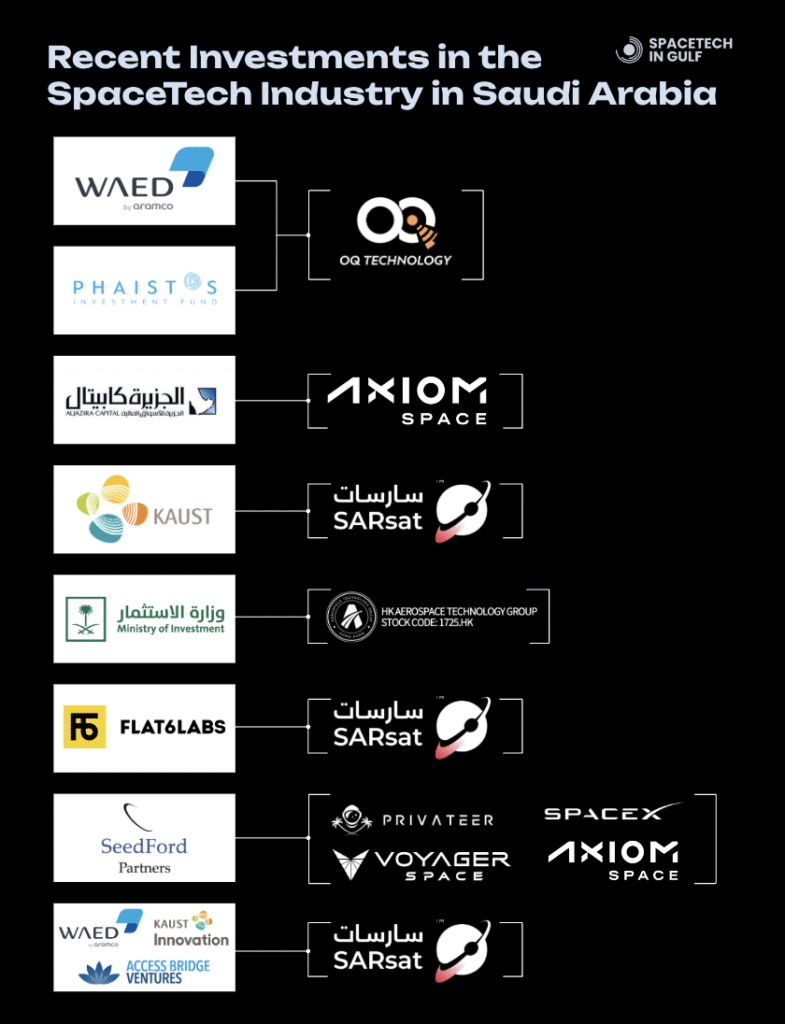
Here are some recent investments in the space industry by Saudi organizations.
Workforce Development and Addressing Skill Gaps: Saudization Policies, Training Programs, and Talent Mobility Initiatives
Developing a competitive and sustainable space industry necessitates substantial investment in education, research, and the cultivation of a new generation of scientists, engineers, and innovators. The Saudi Space Agency (SSA) plays a central role in this endeavor, with its mandate including the development of national cadres’ capabilities across all areas of the space sector and the broader building of human and technical capabilities within the Kingdom. The Human Space Flight program, for instance, explicitly aims to “prepare Saudi cadres to become professional astronauts” and to “grow Saudi’s technical human capital”.
Despite these concerted efforts, significant challenges persist in workforce development and talent supply. As the Saudi economy diversifies rapidly, the demand for specialized talent, particularly in high-growth sectors like space, is outpacing the local supply. This imbalance is compounded by increasing restrictions on foreign hires due to reinforced Saudization policies, which aim to boost the employment of Saudi nationals in the private sector. Companies operating in the Kingdom must also navigate a complex and evolving digital and policy-driven HR landscape, requiring adaptation to frequent regulatory changes and integration with government platforms. The global skills gap, particularly acute in technology sectors such as cybersecurity and Artificial Intelligence (AI), further impacts Saudi Arabia’s ability to source highly specialized expertise.
In response to these challenges, Saudi Arabia has launched several initiatives to develop its workforce. A key measure is the National Skills Platform, designed to equip the workforce with future-ready capabilities and align national talent with global trends, leveraging AI for smarter training pathways tailored to individual needs.
The Skills Accelerator Initiative, launched in March 2023, aims to train over 300,000 individuals in high-growth sectors, including energy, healthcare, finance, and retail, with potential applicability to the space sector’s technical requirements.
The Waad National Training Campaign has delivered over 1 million training opportunities in its first phase and aims to reach 3 million, with support from public and private sector partners.
Furthermore, the Talent Enrichment Program and Professional Accreditation Program extend these efforts globally, enabling professionals in 160 countries to gain internationally recognized credentials, enhancing global workforce mobility and competitiveness. To ensure relevance, 13 sector skill councils, comprising over 240 million members from public and private sectors, are responsible for identifying skill and job requirements and how to address them. Additionally, talent mobility services and internal job marketplaces are being deployed to facilitate the reskilling and redeployment of talent across industries. The CST also promotes economic growth in the space sector by organizing startup competitions, such as the SpaceUp Competition.
The Kingdom’s approach to workforce development involves a delicate balance between localization and the acquisition of global talent. On one hand, there is an undeniable and strong push for “Saudization” and the development of “national cadres” to ensure local capacity and economic diversification. This commitment is evident in the various training programs and initiatives aimed at upskilling the Saudi workforce. On the other hand, there is a clear acknowledgment of the existing “mismatches in local talent supply and demand” and the continuing necessity to attract “foreign investment and expertise in advanced technologies”. The global reach of the Professional Accreditation Program, which enables professionals worldwide to gain recognized credentials and enhance global workforce mobility, further illustrates this recognition. For industry players, this necessitates a dual strategy: actively participating in Saudization efforts and local talent development programs (e.g., through training, internships, and meeting local hiring targets) while simultaneously advocating for and utilizing mechanisms that allow for the recruitment of specialized international talent where local gaps persist. The updated Investment Law’s focus on ease of entry and the benefits offered by Special Economic Zones, including relaxed labor regulations in some instances, suggest a governmental understanding of this necessary balance.
V. International Collaboration and Global Positioning
Strategic Partnerships: Collaborations with NASA (Artemis Accords, Artemis II), India, South Korea, ROSCOSMOS, and Academic Institutions
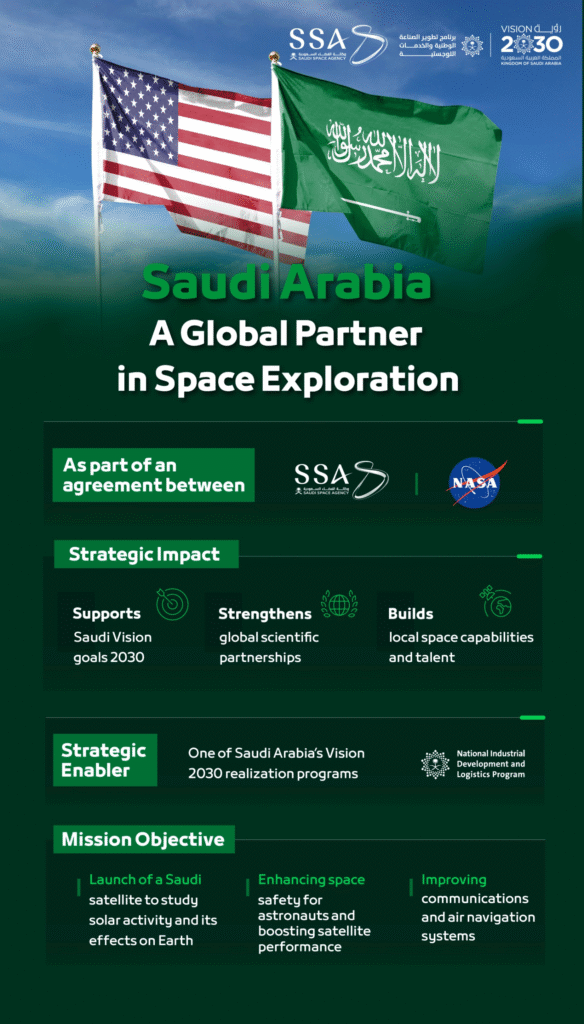
International collaboration is a fundamental pillar of Saudi Arabia’s space strategy, serving as a core objective of its Human Space Flight program to enhance the Kingdom’s global role and contributions. The Kingdom is actively forging a diverse network of strategic partnerships with leading space agencies and international organizations worldwide.
A prominent collaboration is with the U.S. National Aeronautics and Space Administration (NASA). Saudi Arabia has acceded to the Artemis Accords, a global coalition dedicated to the peaceful exploration of the Moon, Mars, asteroids, and comets. This accession signifies a deep commitment to future deep-space missions. Further cementing this partnership, the Saudi Space Agency (SSA) signed an executive agreement with NASA to launch the first Saudi satellite dedicated to studying space climate as part of the
Artemis II mission. This CubeSat is designed to collect crucial data on space weather, including space radiation, solar X-rays, solar energetic particles, and magnetic fields, contributing to global scientific research and astronaut safety.
Beyond its partnership with the US, Saudi Arabia is expanding its international footprint:
- With India, the SSA signed a Memorandum of Understanding (MoU) with the Indian Department of Space (DoS) to enhance cooperation in the field of space for peaceful purposes.
- Similarly, an MoU was signed with the Korea Aerospace Administration (KASA) to strengthen bilateral cooperation in space-related fields, supporting the growth of the space economy.
- A joint statement of intent was established with the State Space Corporation “ROSCOSMOS” (Russia) for cooperation in human space flights and the GLONASS global navigation satellite system.
- To bolster its human capital and research capabilities, the SSA has executive program agreements with esteemed academic institutions such as the International Space University and the University of Arizona. These agreements aim to support graduate-level education and scientific research, facilitate the exchange of space-interested students and researchers, and develop national cadres.
- Regionally, Saudi Arabia is a signatory to the basic charter establishing the first Arab Space Cooperation Group, an initiative designed to encourage Arab space cooperation across all activities with common goals, and to achieve harmony in regulatory practices among space authorities.
- The Kingdom is also participating in the Space For Climate Observatory, an international initiative focused on leveraging satellite data and digital technologies for climate action.
- The Saudi Space Agency (SSA) launched the Centre for Space Futures, the first of its kind within the network of Fourth Industrial Revolution Centers affiliated with the World Economic Forum. This initiative is part of the Kingdom’s ongoing efforts to solidify its leadership in the global space sector and foster growth in economic development, research, and innovation within this vital field.
Saudi Arabia’s Role in Global Space Governance
Saudi Arabia’s active participation in international space programs and cooperations is a deliberate strategy to increase its diplomatic influence on the global stage. The Kingdom is not merely a recipient of technology but an active voice in shaping global space norms. For instance, Saudi Arabia has publicly called for greater international coordination on technical standards and radio spectrum management. This advocacy aims to boost satellite investment and foster global collaboration, reflecting a desire to establish unified technical specifications that create a stimulating investment environment and enhance market entry opportunities for all missions.
CST and SSA representatives regularly participate in high-level global summits and symposiums, reviewing the prospects of the space economy and highlighting the Kingdom’s commitment to sustainability efforts in space. This active engagement at international forums underscores Saudi Arabia’s intent to be a responsible and influential player in global space governance.
Saudi Arabia’s engagement with a diverse array of international partners, including the United States (NASA/Artemis Accords), India, South Korea, and multiple European entities, illustrates a sophisticated and multi-faceted space diplomacy strategy. This approach is not confined to a singular alliance but rather reflects a multi-polar engagement. The strategic decision to withdraw from the Moon Agreement while simultaneously joining the Artemis Accords suggests a selective alignment with international frameworks that best serve its national interests and ambitious lunar and Mars exploration goals. This indicates that space cooperation is intricately woven into Saudi Arabia’s broader diplomatic and strategic objectives. For industry players, this implies that partnerships are not solely about technological exchange but also about contributing to Saudi Arabia’s geopolitical positioning and its vision of serving as a “bridge between competing global powers”. Projects that can demonstrate value across multiple international partnerships or align with broader geopolitical objectives may therefore be particularly attractive to the Kingdom.
You can find more info on the Saudi Space Ecosystem in our recent magazine.
VI. Challenges and Strategic Considerations for Industry
While Saudi Arabia’s space ambitions are bold and backed by substantial resources, the journey to becoming a major global player is not without its challenges. Industry stakeholders must consider these factors to formulate effective engagement strategies.
Investment in Infrastructure, Education, and Research: Ongoing Needs
Developing a competitive and self-sufficient space industry requires continuous and substantial investment in critical infrastructure, advanced education, and cutting-edge research capabilities. Although the Public Investment Fund (PIF) and government capital injections represent significant financial commitments, ensuring sustained funding for the long-term development of complex space technologies and supporting infrastructure remains an ongoing requirement. The projected growth of the Saudi space economy to $31.6 billion by 2035 is explicitly stated to be “supported by investments in the Space sector infrastructure”, highlighting that continued capital expenditure is a prerequisite for achieving these ambitious targets.
Workforce Development and Talent Supply: Navigating Saudization and Specialized Skill Demands
A critical challenge lies in bridging the gap between the demand for specialized talent in the rapidly diversifying economy and the available local supply. The Kingdom’s reinforced Saudization policies, aimed at increasing the employment of Saudi nationals, lead to increasing restrictions on foreign hires. While essential for national development, this policy requires businesses to strategically plan their workforce, balancing local hiring targets with the need for highly specialized expatriate talent, especially in niche space-related fields where local expertise may still be developing. Furthermore, companies must navigate a complex and evolving digital and policy-driven HR landscape, which includes integrating HR workflows with government platforms and adapting to frequent regulatory changes. The global skills gap, particularly in high-tech areas like cybersecurity and Artificial Intelligence (AI), exacerbates this challenge, as these skills are crucial for advanced space applications.
Geopolitical and Economic Dynamics: Broader Context Affecting Growth
Saudi Arabia’s economic transformation and space ambitions unfold within a complex global environment characterized by economic uncertainties and geopolitical tensions. The Kingdom’s emerging role as a mediator carries inherent diplomatic risks, and its significant investments, including those from the US, remain susceptible to shifts in international policy. Domestically, the pursuit of non-oil growth targets faces competition from other regional economies also striving for diversification. A fundamental dilemma for the country involves simultaneously managing its vast fossil fuel assets while establishing leadership in clean energy, a balancing act that is becoming increasingly intricate. These broader geopolitical and economic dynamics can influence investment flows, international partnerships, and the overall pace of space sector development.
Competitive Landscape: Regional and Global Positioning
The “KSA Space Market Report 2025” explicitly aims to “enhance its competitiveness” within the space sector. This objective is set against a backdrop of a highly competitive and rapidly expanding global space market, projected to reach $1.8 trillion by 2035. Saudi Arabia’s competitive strategy involves leveraging superior technologies, attracting private sector finance, and tapping into the global pool of scientific and engineering talent. The Kingdom’s ambition to establish itself as a regional hub for space-related Research and Development (R&D) positions it in direct competition with other nations in the Middle East and beyond that are also investing heavily in their space capabilities.
The high projected Compound Annual Growth Rate (CAGR) of 12% for the Saudi space economy clearly indicates an aggressive growth strategy. However, this rapid expansion also brings with it the inherent challenge of ensuring sustainable development. The need for “substantial investment in infrastructure, education, and research” is acknowledged as an ongoing challenge, alongside the imperative to “lead the way in sustainable space exploration practices”. The scheduling of a “Space Debris 2026” conference and the Neo Space Group’s explicit “Commitment to Sustainability” demonstrate an awareness of the environmental implications of rapid expansion. Another key event to watch is the in2Space Conference, planned for Nov 2025. This suggests that while the market is growing quickly, industry players should recognize that Saudi Arabia’s long-term vision encompasses sustainability. Solutions that are not only innovative and economically viable but also environmentally responsible and contribute to sustainable space practices will likely be favored, necessitating robust long-term planning and investment beyond immediate gains.
VII. Conclusion and Recommendations for Industry Engagement
Saudi Arabia’s burgeoning space program represents a transformative leap for the Kingdom, meticulously integrated with the broader objectives of Vision 2030. This strategic alignment aims for profound economic diversification, significant job creation, and an elevated global standing. The Kingdom has unequivocally demonstrated its commitment through substantial financial investments, notably from the Public Investment Fund and direct government allocations, alongside the establishment of dedicated and powerful institutions such as the Saudi Space Agency (SSA), the Communications, Space, and Technology Commission (CST), and the Supreme Space Council. Ambitious initiatives, including the Human Space Flight program, the launch of the Neo Space Group, and pioneering ventures into space tourism, underscore this dedication.
The Saudi space economy is projected for rapid and impressive growth, with its Compound Annual Growth Rate (CAGR) expected to outpace global averages, signaling significant market opportunities across various segments. This growth is further supported by a progressively supportive regulatory and investment environment, characterized by new investment laws and the strategic establishment of Special Economic Zones designed to attract and protect foreign investment. Moreover, extensive international collaborations, including those with NASA, India, and South Korea, highlight Saudi Arabia’s clear intent to be a major global player and a hub for space-related knowledge and innovation.
For businesses seeking to enter or expand within the dynamic Saudi space market, a strategic and nuanced approach is essential. The following recommendations are designed to guide effective engagement:
- Strategic Alignment with Vision 2030: It is paramount to articulate how your offerings directly contribute to Saudi Arabia’s core objectives of economic diversification, high-skilled job creation (particularly for Saudi nationals), technology localization, and the enhancement of the Kingdom’s global standing. Proposals should explicitly link to the “Thriving Economy” and “Ambitious Nation” pillars of Vision 2030, demonstrating a clear understanding of the national strategic priorities.
- Focus on Downstream Services and Data Utilization: Given the current market dynamics and projected growth, prioritizing solutions in satellite communications, geospatial services, Earth observation data analytics (for applications such as urban planning, agriculture, environmental monitoring, and disaster response), and Internet of Things (IoT) connectivity will yield the most immediate opportunities. These areas benefit from existing infrastructure and demonstrated demand within the Kingdom.
- Embrace Localization and Technology Transfer: The Kingdom’s long-term vision emphasizes self-sufficiency and indigenous capabilities. Therefore, actively pursuing joint ventures, establishing local manufacturing or research and development (R&D) facilities, and committing to the transfer of expertise and intellectual property will be critical. Demonstrating how your presence will contribute to building local capabilities aligns directly with the objectives of the Neo Space Group and the broader national strategy.
- Invest in Human Capital Development: Propose and actively participate in training programs, internships, and educational initiatives specifically designed for Saudi nationals. Collaboration with local universities and institutions, such as King Abdullah University of Science and Technology (KAUST), King Saud University, and those partnered with the SSA, can effectively address skill gaps and support Saudization targets. Participation in initiatives like the SpaceUp Competition can also be a valuable avenue for engagement.
- Leverage Investment Incentives and Special Economic Zones: Thoroughly explore the opportunities available within Saudi Arabia’s Special Economic Zones (SEZs). For instance, the Cloud Computing at KACST SEZ is ideal for data-intensive operations, King Abdullah Economic City (KAEC) for aerospace manufacturing, and the Special Integrated Logistics Zone (SILZ) for logistics and distribution. These zones offer substantial benefits, including tax breaks, customs exemptions, and streamlined regulations. A comprehensive understanding of the updated Investment Law is crucial to maximize these advantages and ensure compliance.
- Foster International Partnerships: Seek opportunities for collaboration with Saudi entities that have established international agreements, such as those with NASA, India, or South Korea. Positioning your company as a facilitator for global best practices and technological exchange can significantly enhance your appeal and strategic relevance.
- Address Sustainability and Responsible Practices: Integrate sustainable practices into your operations and solutions. Aligning with Saudi Arabia’s commitment to sustainable space exploration and environmental monitoring, as evidenced by initiatives like SpaceUP, Space Debris 2026 conference and Neo Space Group’s sustainability commitments, will be a key differentiator.
- Navigate Regulatory and Workforce Dynamics: Engage with local advisors to stay abreast of evolving regulations, particularly those pertaining to Human Resources and Saudization policies, and to effectively utilize digital government platforms. Developing agile workforce strategies that judiciously balance local hiring targets with the necessary recruitment of specialized expatriate talent will be essential for long-term success.
- Monitor Emerging Trends: Maintain a close watch on nascent areas, in-space manufacturing, and the development of rocket manufacturing capabilities. While these may be longer-term prospects, they represent significant potential opportunities as the Saudi space sector continues to mature and expand.
The explicit request for a “Guide for Industry” underscores the need for actionable advice and a clear understanding of potential challenges. The identified challenges, including ongoing investment needs, workforce development gaps, geopolitical risks, and the competitive landscape, are not insurmountable obstacles but rather strategic considerations that, when properly managed, can unlock the vast potential within the Saudi space sector. Businesses that undertake thorough due diligence, cultivate strategic partnerships, and demonstrate a long-term commitment to the Saudi market are best positioned to capitalize on the Kingdom’s ambitious ascent in space.
About the Authors
Alex Cresniov – Serial entrepreneur with six years of experience in managing companies, building IT and AI products, and extensive expertise in B2B sales and partnerships. Ten years of teaching experience.
Abdullah I. AlGharrash – Dedicated Saudi aerospace engineer and entrepreneur with extensive experience in the space and jet engines industries. Experienced in collaboration with national and international space organizations, a committed researcher, and a published author in space applications.
Rajeeshwaran Moorthy – MRAeS is a global leader at the intersection of space policy, education, venture strategy, and ecosystem development. He currently leads initiatives spanning four key pillars: (a) research supporting national space policy development, (b) advisory and capacity-building for space technology companies, (c) design of educational frameworks and curricula on the space economy, (d) capital deployment through syndicate-based space fund models. Raj sits on the boards of multiple space tech firms and academic institutions and is a direct investor in early-stage ventures across the sector. He is also in the process of launching dedicated platforms for space analytics and investment strategies. Most recently, Raj was elected a Member of the Royal Aeronautical Society (MRAeS), and was appointed as Guest Faculty at the International Space University (ISU), where he is leading capital raising modules for space ventures.
Rihab Ben Moussa – Legal and policy researcher specializing in international space law, regulatory frameworks, and African space policy initiatives. She serves as an Advisory Board Member at SpaceTech in Gulf, providing strategic recommendations on space regulations in the MENA region. With experience at Tunisia’s National Agency of Frequency, she contributed to the development of the country’s satellite services legal framework. Rihab has led international collaborations as Head of Strategic Relations at the Tunisian Space Association and co-founded initiatives such as the African Working Group on Satellite Connectivity. She holds a Master’s degree in Private Law from the Faculty of Law and Science Policy in Tunis Manar and has co-authored research on AI and space governance. Recognized as an ISA Fellow by the Italian Space Agency, she is actively shaping inclusive and sustainable space policies.
Contact us via info@spacetech-gulf.com
